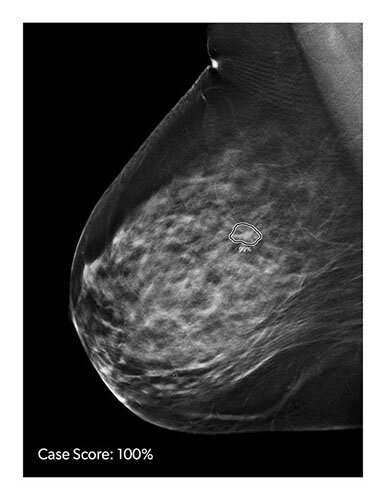AI Model Draws Maps to Accurately Identify Tumors and Diseases in Medical Images
|
By MedImaging International staff writers Posted on 05 Mar 2024 |

The interpretation of medical images varies across different regions of the world, particularly in developing countries where doctor shortages and long patient queues are common. Artificial Intelligence (AI) has emerged as a valuable aid in these settings. Automated medical image screening using AI can act as a supportive tool for doctors, pre-scanning images and highlighting unusual findings, such as tumors or early disease indicators (biomarkers), for further medical review. This approach not only saves time but can also enhance the accuracy of diagnoses. However, traditional AI models lack the capability to explain their findings, merely indicating the presence or absence of tumors without further elaboration.
Now, researchers at the Beckman Institute for Advanced Science and Technology (Urbana, IL, USA) have developed an innovative AI model that not only detects anomalies but also explains each decision it makes. This model, unlike standard AI tools, provides interpretive feedback rather than just identifying tumors. Conventionally, AI models assisting doctors are trained with numerous medical images, some showing abnormalities and others normal. These models, upon encountering a new image, assign a probability score indicating the likelihood of a tumor being present.
This novel AI model goes a step further by offering a visual explanation for its decision-making process through what's known as an "equivalency map" (E-map). This E-map transforms the original medical image, such as an X-ray or mammogram, assigning values to different regions based on their medical significance in predicting anomalies. The model aggregates these values to derive a final diagnostic score. This transparent approach allows doctors to see which areas of the map contributed more significantly to the diagnosis and to investigate these regions more closely, enhancing understanding and answering patient inquiries about the diagnostic process.
The research team trained this model on over 20,000 images across three different disease diagnostic tasks. The model was taught to identify early signs of tumors in simulated mammograms, to detect Drusen buildup in retinal images indicative of macular degeneration, and to recognize cardiomegaly in chest X-rays. When compared to traditional AI systems without self-explanation capabilities, this new model demonstrated comparable accuracy: 77.8% in mammograms, 99.1% in retinal OCT images, and 83% in chest X-rays, matching the existing models' accuracy. The success of this model, which employs a deep neural network mimicking the complexity of human neurons, is attributed to its design inspired by simpler, more interpretable linear neural networks. The researchers aim to extend this model's application to various body parts, with the ability to potentially distinguish between different anomalies in future developments.
"The idea is to help catch cancer and disease in its earliest stages — like an X on a map — and understand how the decision was made. Our model will help streamline that process and make it easier on doctors and patients alike,” said Sourya Sengupta, the study’s lead author and a graduate research assistant at the Beckman Institute.
“I am excited about our tool’s direct benefit to society, not only in terms of improving disease diagnoses, but also improving trust and transparency between doctors and patients,” added principal investigator Mark Anastasio, a Beckman Institute researcher and the Donald Biggar Willet Professor and Head of the Illinois Department of Bioengineering.
Related Links:
Beckman Institute
Latest General/Advanced Imaging News
- New AI Method Captures Uncertainty in Medical Images
- CT Coronary Angiography Reduces Need for Invasive Tests to Diagnose Coronary Artery Disease
- Novel Blood Test Could Reduce Need for PET Imaging of Patients with Alzheimer’s
- CT-Based Deep Learning Algorithm Accurately Differentiates Benign From Malignant Vertebral Fractures
- Minimally Invasive Procedure Could Help Patients Avoid Thyroid Surgery
- Self-Driving Mobile C-Arm Reduces Imaging Time during Surgery
- AR Application Turns Medical Scans Into Holograms for Assistance in Surgical Planning
- Imaging Technology Provides Ground-Breaking New Approach for Diagnosing and Treating Bowel Cancer
- CT Coronary Calcium Scoring Predicts Heart Attacks and Strokes
- AI Model Detects 90% of Lymphatic Cancer Cases from PET and CT Images
- Breakthrough Technology Revolutionizes Breast Imaging
- State-Of-The-Art System Enhances Accuracy of Image-Guided Diagnostic and Interventional Procedures
- Catheter-Based Device with New Cardiovascular Imaging Approach Offers Unprecedented View of Dangerous Plaques
- AI-Enabled CT System Provides More Accurate and Reliable Imaging Results
- Routine Chest CT Exams Can Identify Patients at Risk for Cardiovascular Disease
- AR Preoperative Surgical Planning Software Makes Surgery Safer and More Efficient

Channels
Radiography
view channel
Novel Breast Imaging System Proves As Effective As Mammography
Breast cancer remains the most frequently diagnosed cancer among women. It is projected that one in eight women will be diagnosed with breast cancer during her lifetime, and one in 42 women who turn 50... Read more
AI Assistance Improves Breast-Cancer Screening by Reducing False Positives
Radiologists typically detect one case of cancer for every 200 mammograms reviewed. However, these evaluations often result in false positives, leading to unnecessary patient recalls for additional testing,... Read moreMRI
view channel
PET/MRI Improves Diagnostic Accuracy for Prostate Cancer Patients
The Prostate Imaging Reporting and Data System (PI-RADS) is a five-point scale to assess potential prostate cancer in MR images. PI-RADS category 3 which offers an unclear suggestion of clinically significant... Read more
Next Generation MR-Guided Focused Ultrasound Ushers In Future of Incisionless Neurosurgery
Essential tremor, often called familial, idiopathic, or benign tremor, leads to uncontrollable shaking that significantly affects a person’s life. When traditional medications do not alleviate symptoms,... Read more
Two-Part MRI Scan Detects Prostate Cancer More Quickly without Compromising Diagnostic Quality
Prostate cancer ranks as the most prevalent cancer among men. Over the last decade, the introduction of MRI scans has significantly transformed the diagnosis process, marking the most substantial advancement... Read moreUltrasound
view channel
Deep Learning Advances Super-Resolution Ultrasound Imaging
Ultrasound localization microscopy (ULM) is an advanced imaging technique that offers high-resolution visualization of microvascular structures. It employs microbubbles, FDA-approved contrast agents, injected... Read more
Novel Ultrasound-Launched Targeted Nanoparticle Eliminates Biofilm and Bacterial Infection
Biofilms, formed by bacteria aggregating into dense communities for protection against harsh environmental conditions, are a significant contributor to various infectious diseases. Biofilms frequently... Read moreNuclear Medicine
view channel
New SPECT/CT Technique Could Change Imaging Practices and Increase Patient Access
The development of lead-212 (212Pb)-PSMA–based targeted alpha therapy (TAT) is garnering significant interest in treating patients with metastatic castration-resistant prostate cancer. The imaging of 212Pb,... Read moreNew Radiotheranostic System Detects and Treats Ovarian Cancer Noninvasively
Ovarian cancer is the most lethal gynecological cancer, with less than a 30% five-year survival rate for those diagnosed in late stages. Despite surgery and platinum-based chemotherapy being the standard... Read more
AI System Automatically and Reliably Detects Cardiac Amyloidosis Using Scintigraphy Imaging
Cardiac amyloidosis, a condition characterized by the buildup of abnormal protein deposits (amyloids) in the heart muscle, severely affects heart function and can lead to heart failure or death without... Read moreImaging IT
view channel
New Google Cloud Medical Imaging Suite Makes Imaging Healthcare Data More Accessible
Medical imaging is a critical tool used to diagnose patients, and there are billions of medical images scanned globally each year. Imaging data accounts for about 90% of all healthcare data1 and, until... Read more
Global AI in Medical Diagnostics Market to Be Driven by Demand for Image Recognition in Radiology
The global artificial intelligence (AI) in medical diagnostics market is expanding with early disease detection being one of its key applications and image recognition becoming a compelling consumer proposition... Read moreIndustry News
view channel
Bayer and Google Partner on New AI Product for Radiologists
Medical imaging data comprises around 90% of all healthcare data, and it is a highly complex and rich clinical data modality and serves as a vital tool for diagnosing patients. Each year, billions of medical... Read more





















